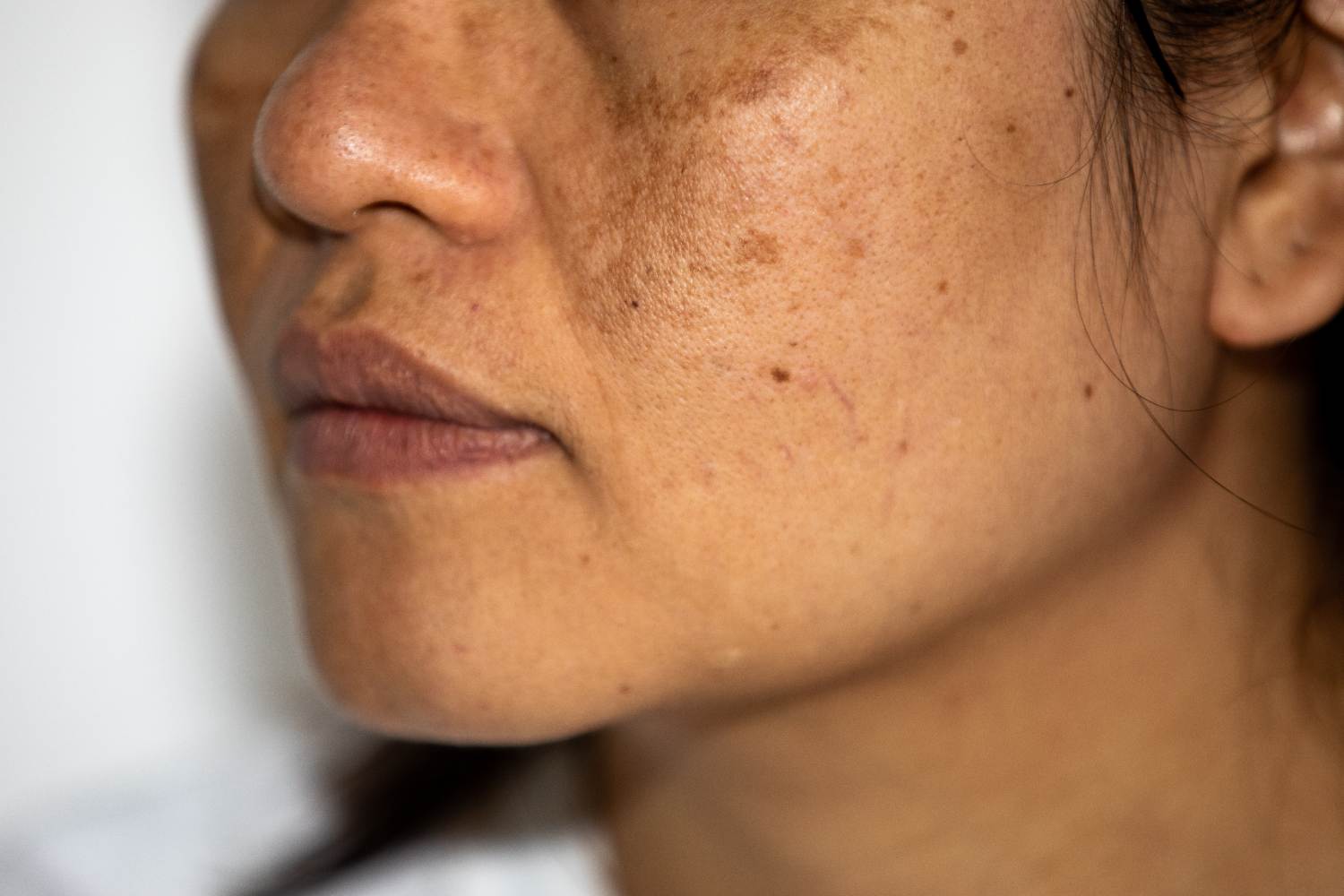Pigmentation
Skin pigmentation refers to the coloration of the skin, which is primarily determined by the presence and distribution of pigments in the skin. The main pigment responsible for skin color in humans is melanin. Melanin is produced by melanocytes, which are specialized cells found in the epidermis, the outermost layer of the skin.
The relative amounts and types of melanin in the skin, along with its distribution, give rise to the various skin tones observed in different individuals. Factors that influence skin pigmentation include genetics, sun exposure, hormonal changes, and certain medical conditions.
The 4 main categories of Skin Pigmentation: Which type do you have?
-

Hyperpigmentation
This refers to the darkening of the skin due to an excess of melanin. Conditions such as sunspots, age spots, and certain types of skin disorders can cause hyperpigmentation.
-

Hypopigmentation
This refers to the lightening of the skin due to a reduction in melanin production. Conditions such as vitiligo, albinism, and certain skin injuries can cause hypopigmentation.
-

Melasma
This is a specific type of hyperpigmentation characterized by brown or gray-brown patches on the face. It is often associated with hormonal changes, such as those during pregnancy or as a result of birth control pills.
-

Freckles
These are small, concentrated areas of increased melanin production, often genetic and more pronounced with sun exposure.




